You want to make sales. You want leads to flock your way faster than you can spend money on advertising.
But more than that, you want those leads to turn into customers. Few things in business are worse than getting a massive amount of leads that go nowhere.
After all, a lead is only valuable if you can turn it into a sale.
Leads don’t make money. Sales make money.
Enter the sales funnel.
The purpose of a funnel is to nurture leads so that they move smoothly through the buying process. Ideally, this means you lose fewer leads.
It’s OK. I’ve been there.
Sometimes you lose leads due to lazy marketing. Or maybe you forget to follow up. Maybe you avoided a customer/client interaction. Or perhaps you were just too dang busy to put in the necessary work.
Whatever the case, losing qualified leads is disastrous.
Digital marketers have two jobs.
First, to bring in leads. And second, to turn those leads into customers.
The sales funnel accomplishes both.
And a webinar is a great thing to include in your sales funnel.
Here’s an illustration of what your webinar sales funnel might look like.
Since webinars are in video format, they feel more personal to the people who are considering your product or service. They give you what feels like a one-on-one interaction with each person in your audience.
And, as every salesperson knows, relationships make customers.
As leads travel through the sales funnel, the percentage of people who remain will generally decrease.
But that’s all part of the process. A funnel doesn’t just help you get leads and nurture them. It also helps you qualify your leads so that you know who you should pay the most attention to.
That’s why it’s called a funnel. Some people don’t make it all the way through.
But that’s OK.
Your goal isn’t to capture every lead that comes through the door, but to capture the right leads.
To do that, you need an exact process for constructing a profitable webinar sales funnel.
And here’s that process.
1. Start with Facebook Ads
It’s no secret that Facebook Ads are one of the most powerful assets available to marketers today.
In June of 2017, Facebook hosted a monthly usership of two billion people. Considering that there are only seven billion people on the planet, Facebook is well on its way to ruling the world.
Or, at least, maintaining its massive impact.
As you can see, other social platforms can also be wildly effective. But none of them have a chance when compared to Facebook.
So while other platforms might be useful for driving people to your webinar, Facebook will generally be the most effective.
Especially if you use Facebook Ads. After all, that’s what the Ads are for, right?
In other words, this is the top of your funnel.
You want to target people who you think will be interested in your webinar and then reach out to them where they’re comfortable: on Facebook.
Here are some tips for creating webinar Facebook Ads.
Push on your audience’s pain.
Every great salesperson knows the importance of emphasizing the prospect’s pain point and then resolving that pain.
Ashley Stahl does a great job of this with her webinar Facebook Ad.
Everyone has applied for a job with high expectations and lost confidence when they didn’t get a response.
Ashley agitates that pressure point and then explains how her webinar is going to mitigate it.
Take her example and do the same:
Touch on the pain that you’re going to resolve for your customers.
Ask yourself: What problem am I going to solve with my webinar content?
Then, include the problem and solution in your Facebook Ad.
Explain your solution.
It won’t do you any good to press on your prospect’s pain point and then leave them to wallow.
Instead, you need to clearly explain your solution. And that’s exactly what GMAT Club does here.
A problem and a solution go together like peanut butter and jelly.
In fact, the very thing that makes stating the customer’s problem so effective is the upcoming solution that you’re going to offer.
Forget that part, and the pain you’re pressing won’t benefit your marketing strategy.
Be personable.
If your advertisement isn’t personal, people will struggle to build a relationship with your brand.
And if they can’t relate to you, they probably won’t be interested in your webinar.
When Liz Benny advertised for her webinar on how to become a paid social media manager, she imported her playful attitude with a fun picture and copy that shouts, “I’m relatable!”
For your own Facebook Ad, try to find a healthy balance between relatable and formal. You’ll need to decide where that balance sits, but consumers increasingly value authenticity.
So consider erring on the side of transparency.
Tell your story.
Webinars are the perfect place to reveal a little bit of your story. If you’re struggling to come up with a webinar topic, just think about your own success and how you got there.
What did you do? What lessons have you learned? What could you teach other people about?
Your story, in and of itself, is a remarkable piece of content.
There’s always someone below you who’s looking to get to your level. If you promise to teach them how, they’ll likely attend your webinar.
This is exactly what Jason O’Neil did with his webinar.
Your story is powerful.
So if you’re unsure about what to discuss in your webinar, simply tell people about your journey and they’ll get value out of it.
Everyone’s journey is different, and people love listening to stories.
Make your webinar free.
Whenever something is free, more people will sign up.
Michael Hyatt, the guru of audience building and author of Platform, knows this all too well. Just check out his Facebook Ad.
He mentions that his webinar is free in five different places!
If you want more people to show up for your webinar, you need to remove any barriers to entry. And price is often one of those barriers.
Now, you might be concerned that making your webinar free will lower its perceived value. And yes. That’s a danger you need to be aware of.
Consider creating exclusivity and urgency, like Michael Hyatt did by mentioning that “Limited seats are available.”
Doing this will increase the perceived value of your webinar and generate more leads.
Whatever you do, you need to drive registration to your webinar. And making your webinar free ensures that money won’t be an issue.
2. Include a “But wait! There’s more” clause.
Most of us hate infomercials.
The annoying, “But wait! There’s more!” phrase drives us crazy.
We all know they’re lying, don’t we? All of that stuff is probably just included in the price. Anyone can claim their product is worth a higher value than it actually is.
That’s easy.
What’s not easy is getting customers to believe it.
But there’s a reason that infomercials have been effective for so long. Sure, some of the phrasing has become overly cliché and less effective. But the selling tactics still work.
Consider exit-intent popups on e-commerce websites.
In the end, that discount is no different than an infomercial that says, “But wait! There’s more!”
This method is effective because humans naturally want to make smart buying decisions.
Sometimes, just a little bit of extra incentive makes you feel like you’re getting a bargain and will push you over the purchasing edge.
Lots of e-commerce brands use this tactic. DODOCase uses it.
And Pura Vida Bracelets does, too.
But how can you do this in your webinar?
Well, every webinar has a followup offer at the end. So make the offer sound absolutely amazing by adding discounts, a chance to win something, or additional free content for anyone who purchases.
This doesn’t need to be complicated. Take this email from SilverPop as an example.
They allow you to download the webinar and presentation for future viewing, provide additional resources, and pitch a demo at the end that allows users to play around with their service.
Even something as simple as this accomplishes your goal.
A lot of times, people need extra incentive to buy. A “But wait! There’s more!” clause gives it to them.
3. Capture email leads
This might a no-brainer, but a lot of people forget it.
So I’m going to mention it anyway.
When you’re getting registrations for your webinar, don’t forget to collect email addresses during the signup process.
In fact, if you only have one piece of information you require your audience to provide, it should be their email.
Without their email, you can’t follow up, play the lead-nurturing game, or stay in contact with them at all.
Remember: The point of your webinar is to generate leads.
Some of those leads will convert immediately. Others will need some work. Build your contact list so that you can follow up with the latter category.
This webinar, for example, has a registration page that looks like this.
When you click “Claim my spot now!” this window comes up.
You don’t even need to provide your name. You just enter your email address.
Email addresses take priority over every other type of contact information.
People might be willing to enter their name, but it’s an unnecessary barrier since it won’t add any value to your contact with them.
And most people won’t be willing to put in their phone number, so you won’t need their name to contact them.
Everyone is accustomed to giving away their email address, though, so make sure you’re getting the email addresses of every person who wants to register.
This will allow you to alert them when the webinar is starting and to follow up with them afterward.
It’s a must for any sales funnel.
4. Thank everyone for registering
Many marketers skip over this step, assuming that they’ve done their job by securing an email address.
But you also need to leave a good impression.
Someone just signed up for your webinar. That means that they trust you, consider your content valuable, and might even tell their friends about it.
The least you can do is say thank you.
Don’t overthink it. Keep it simple and thank them for signing up.
When I subscribed to a webinar with Smart Blogger, I received this friendly email.
This followup email thanks me for signing up and explains how I can join the webinar.
Similarly, you can thank people with a discount or gift for joining your webinar like Naturebox did with everyone who entered their contest.
Or consider this completion page that thanks the person who subscribed and offers additional free content.
Or just say “thank you” like Orbit Media Studios does whenever someone submits a request.
“Thank you” happens all over the e-commerce, subscription, and support world. Your webinar shouldn’t be the exception.
Regardless of your industry, service, or product, always thank your customers.
First impressions are even more important with a webinar because you’ll be keeping in contact with them over the next few weeks.
You don’t want to start off on the wrong foot.
Keep it simple, but make sure you say thanks.
5. Provide real value in your webinar
It’s tempting for marketers to stuff their webinar with sales pitches and compelling offers.
And while you do want a healthy dose of CTAs in your webinar, you also want to provide real value for your audience.
Why?
The webinar is going to form their perception of who you are and what your business is like.
If your webinar is just full of sales pitches, they’ll probably never attend another one of your webinars.
Remember that you’re building a relationship with your leads in order to turn them into customers.
In Jon Morrow’s webinar (he’s the CEO of Smart Blogger), he provided real value for his audience.
He started by discussing the old and new process for building a profitable blog and then explained why Medium, the public blogging space, is a viable option.
He walked his listeners through the entire process of building an audience on Medium.
At the end of his talk, he even told people that they could pitch him a blogging topic and he would critique it.
Additionally, the entire webinar was live, which built even more trust with his audience.
He even told us how to come up with blog topics using BuzzSumo.
All of this genuine value made his message far more compelling and his product far more interesting.
Start by providing real value for people and then move to the finish line to pitch them your CTA.
6. Use a compelling CTA to finish
Every great webinar ends with a CTA.
Even though you’ll be providing value in the webinar, the real reason you’re hosting the webinar is to get sales.
And that’s OK.
Just make sure your CTA is compelling enough that your audience won’t mind when it comes.
In Jon Morrow’s webinar, he eventually discusses the fact that, while Medium is effective at first, it’s difficult to monetize your blog on the platform.
He goes into his spiel about why, as your audience grows, you’ll need your own website to monetize your blog.
He then tells you that you’re welcome to build the website and sales funnel by yourself.
But at the end, he asks the question.
And then he introduces the product he’s offering. He calls it the “Freedom Machine.”
Jon follows the product up with a crazy-compelling guarantee.
Then he adds the pricing so everyone knows how much it costs.
Finally, he finishes with testimonials.
As he shows each of these slides during the webinar, he talks through them.
And I give props to anyone who made it through that pitch without purchasing. You sort of walk away thinking, “What do I have to lose?”
That’s exactly what you want your prospects thinking.
For some people, this pitch at the end of your webinar will be enough. For others, it won’t.
The last point is for those who don’t purchase.
7. Follow up with non-converters
It would be easy to give up on anyone who didn’t convert.
But, realistically, most people need a lot of touch points before they finally convert.
So don’t quit right away.
After attending Jon’s webinar, I received this email almost immediately.
Then, the day after, I received this email.
A week later, I received this.
And finally, later that same night, this hit my inbox.
Jon Morrow followed up with non-converters at least four times.
You should do the same thing. Purchasing your service or product isn’t as easy as it seems. People want to think through it and make sure they’re making the right decision.
Your job is to guide them through this process and keep reminding them of your offer.
Conclusion
The last thing you want is to host an audience-less webinar or bring in leads who don’t convert. Doing so is a waste of content marketing time and dollars.
Sadly, tons of webinars end this way. Either no one shows up or no one buys.
That’s a cruddy situation.
To avoid that outcome and generate leads that convert with your audience, you need a profitable funnel.
Don’t just host a webinar and be done with it. Intentionally think through how you can most effectively guide someone from thinking about your product or service to buying it.
Often, this will start with Facebook Ads. Then, users will register using their email addresses. The webinar will provide real value for them, strengthening their opinion of your brand.
And finally, you’ll finish the webinar with a compelling CTA and follow up with non-converters.
The process isn’t rocket science.
But it is a science.
Using these steps to construct your webinar funnel will convert traffic to leads and leads to customers. All you need to do is implement it.
What are the first and last steps in your webinar sales funnel?

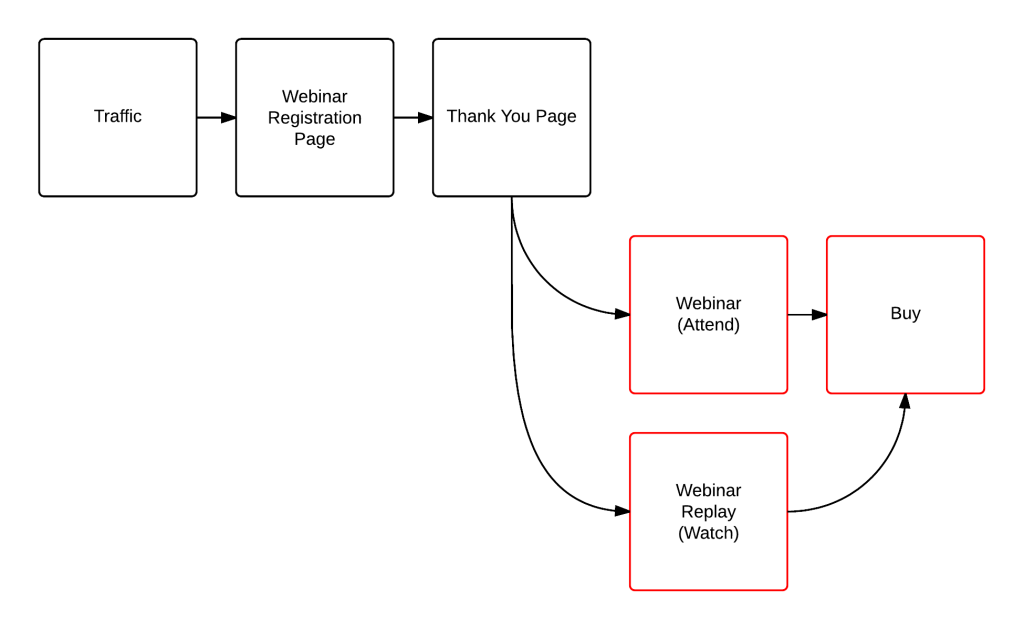
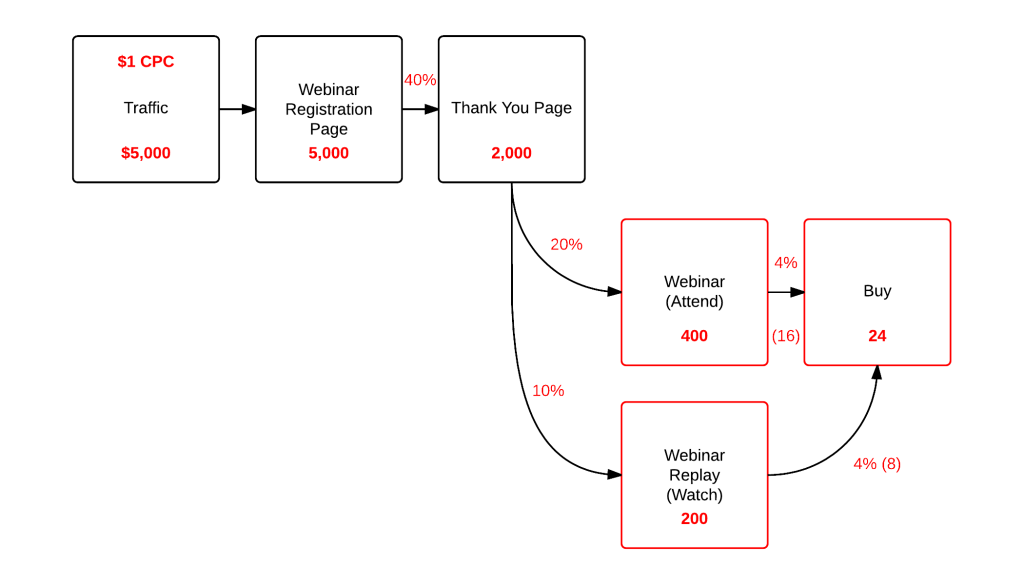

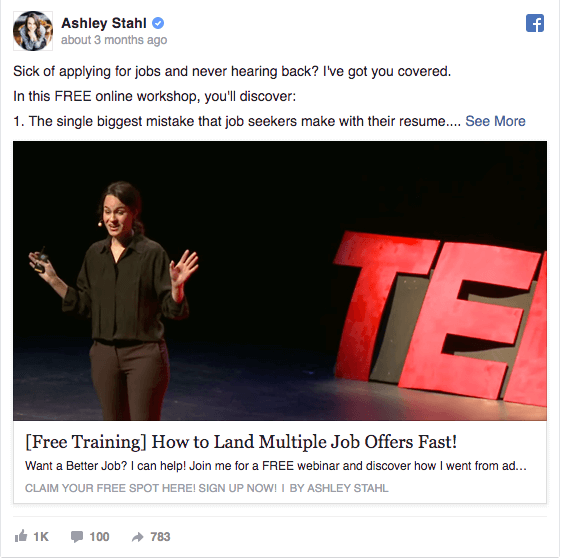

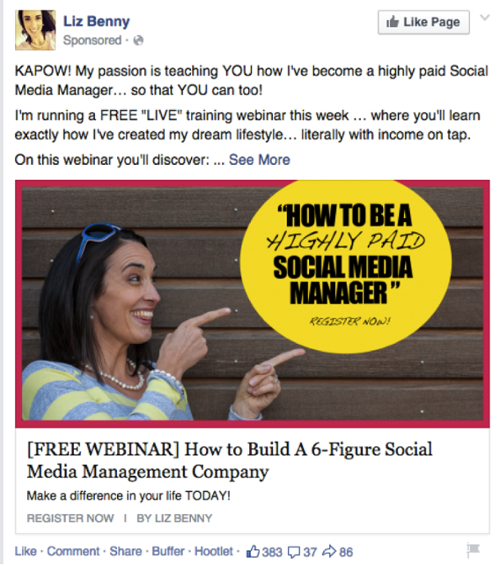
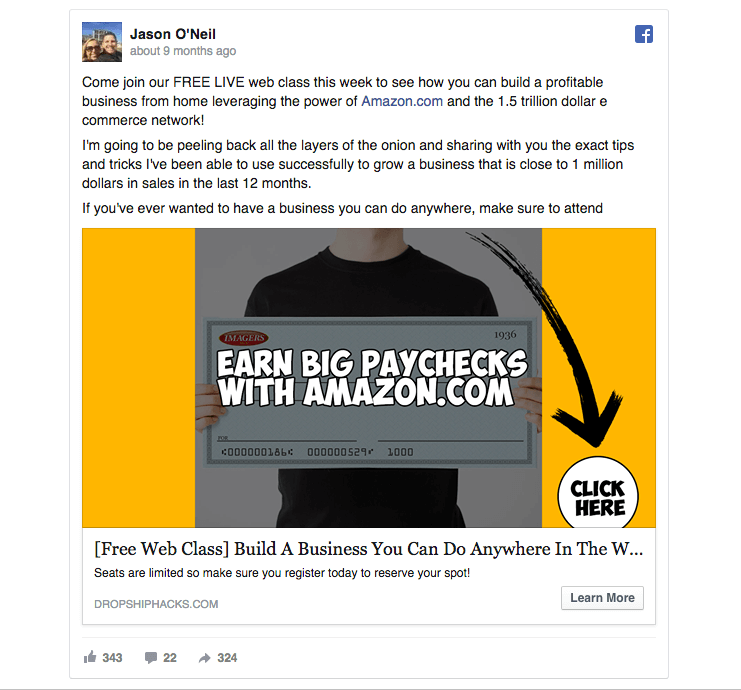
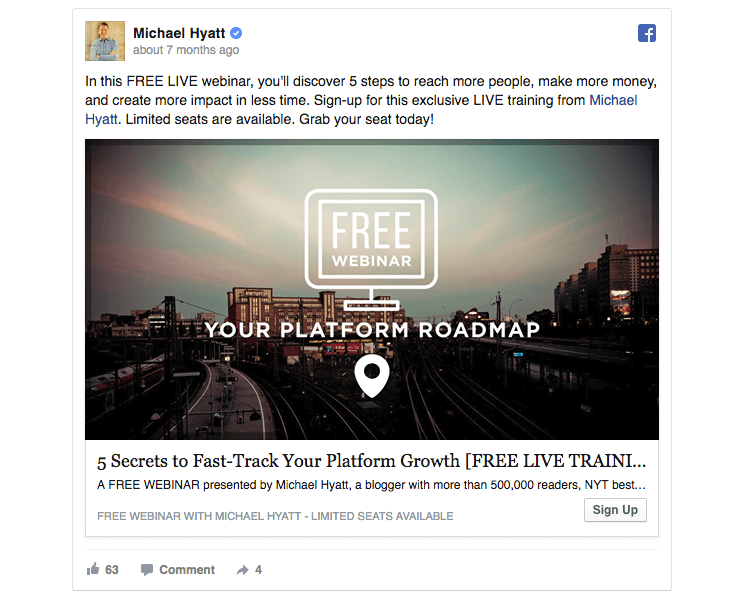
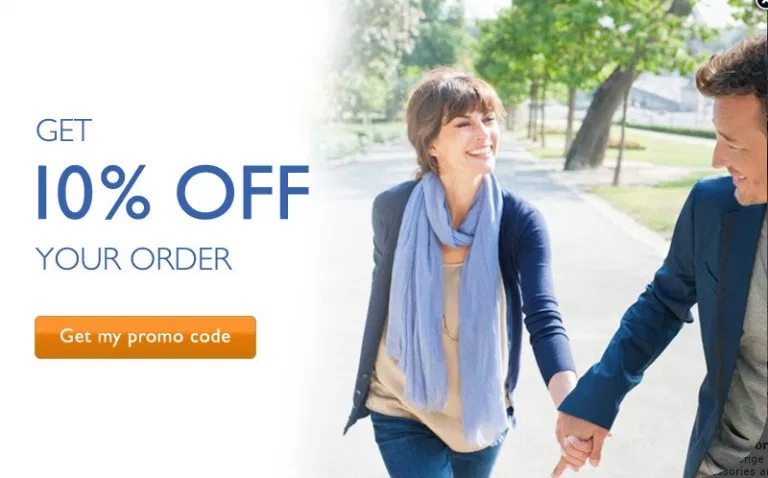
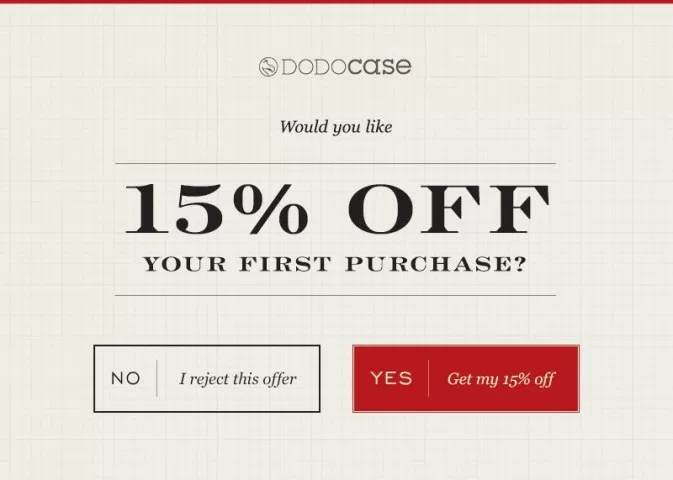
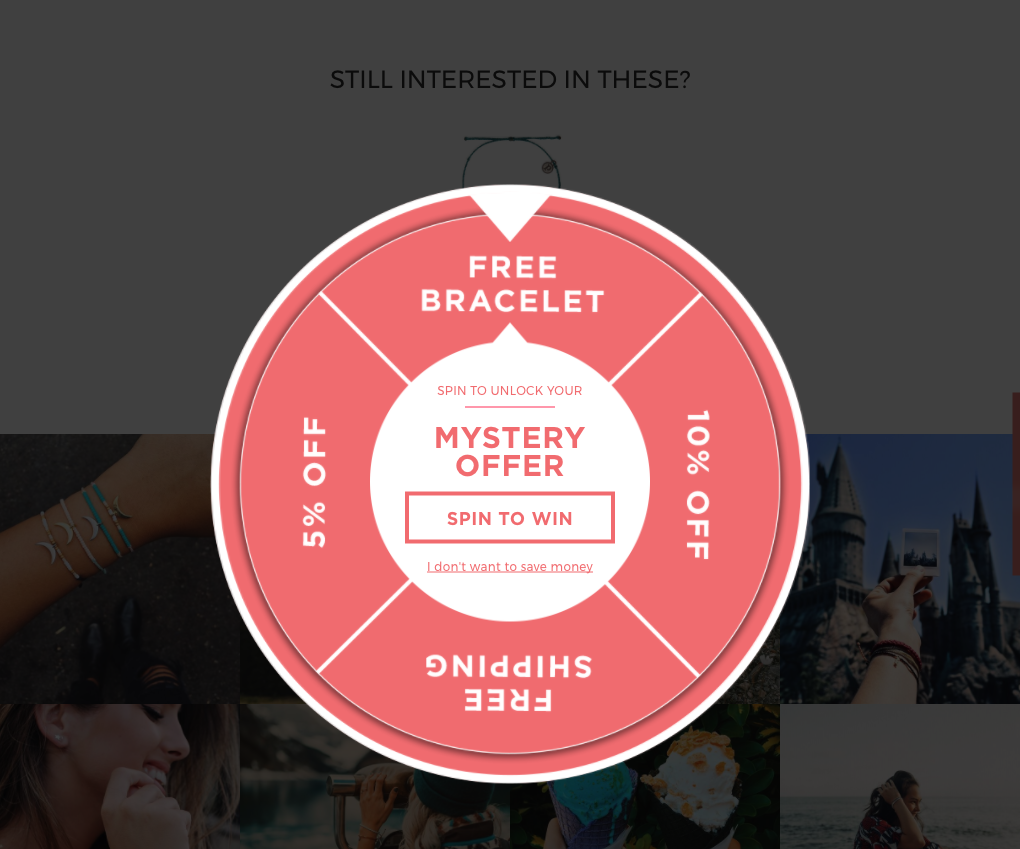
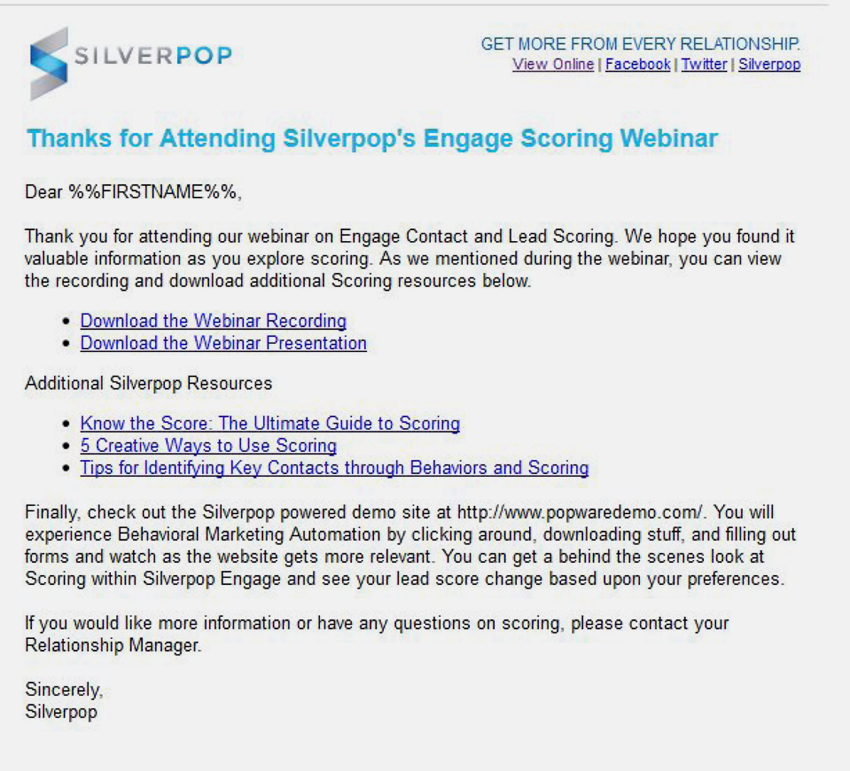
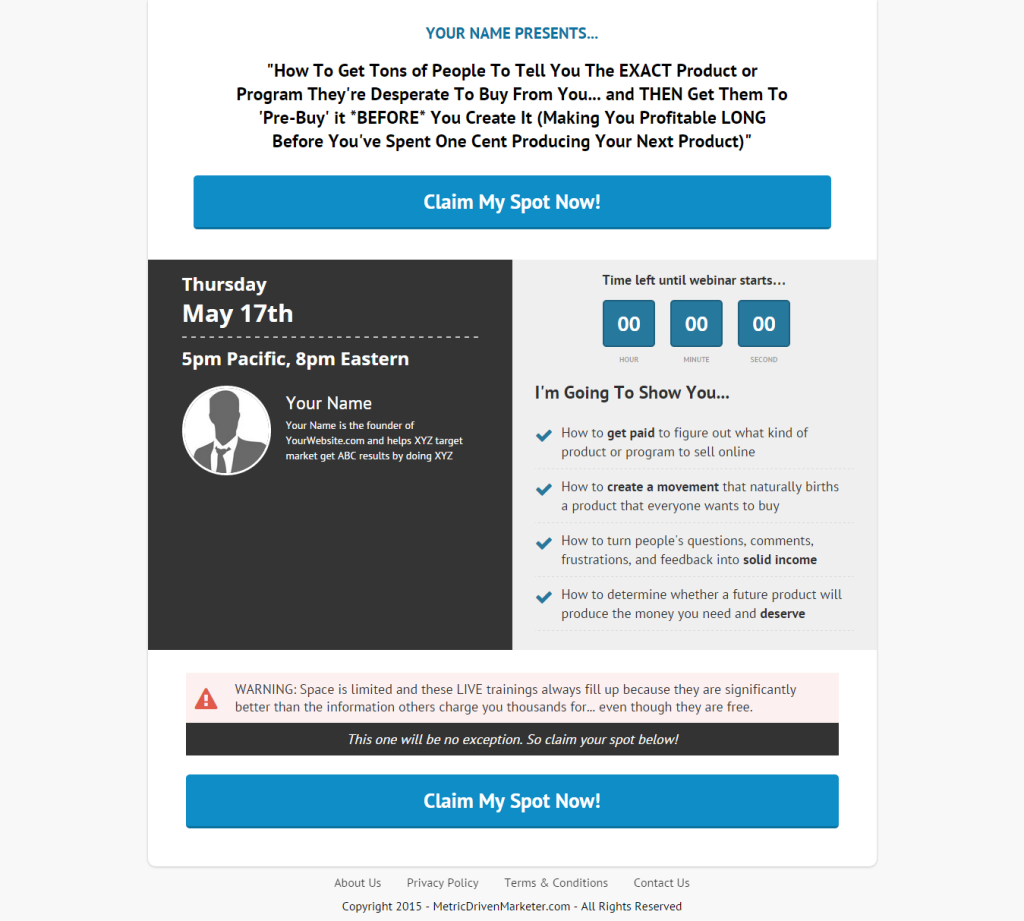
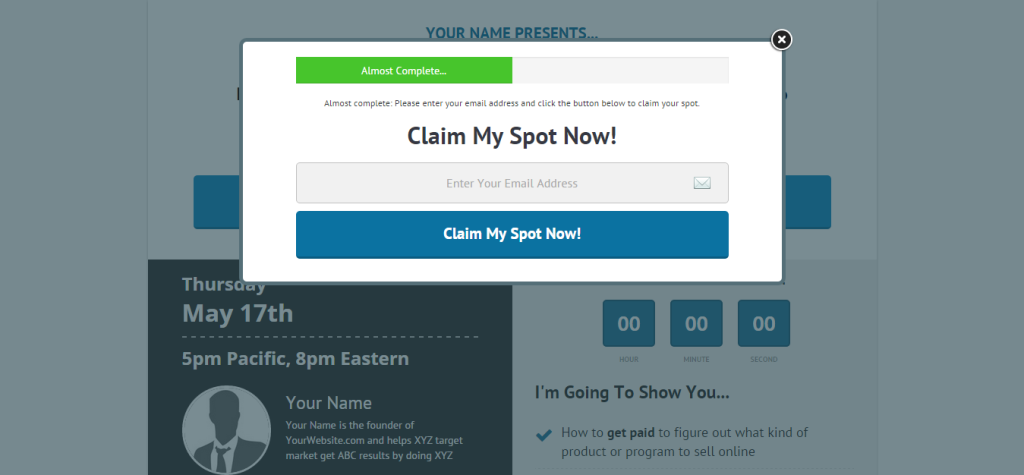

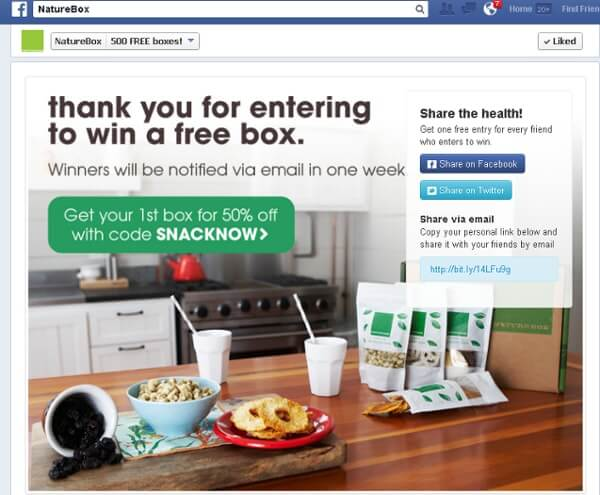
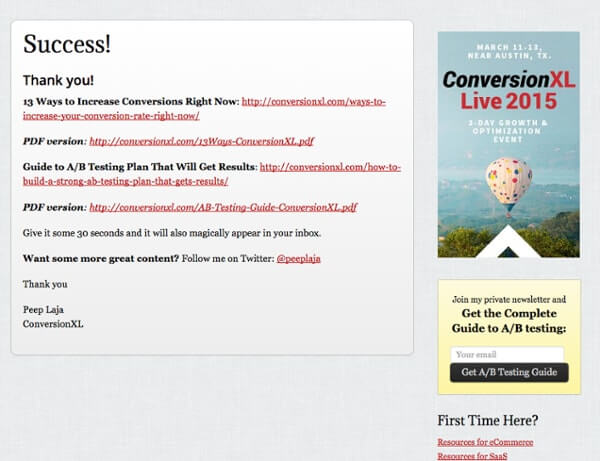
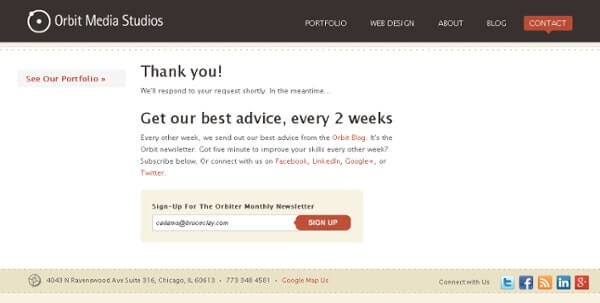
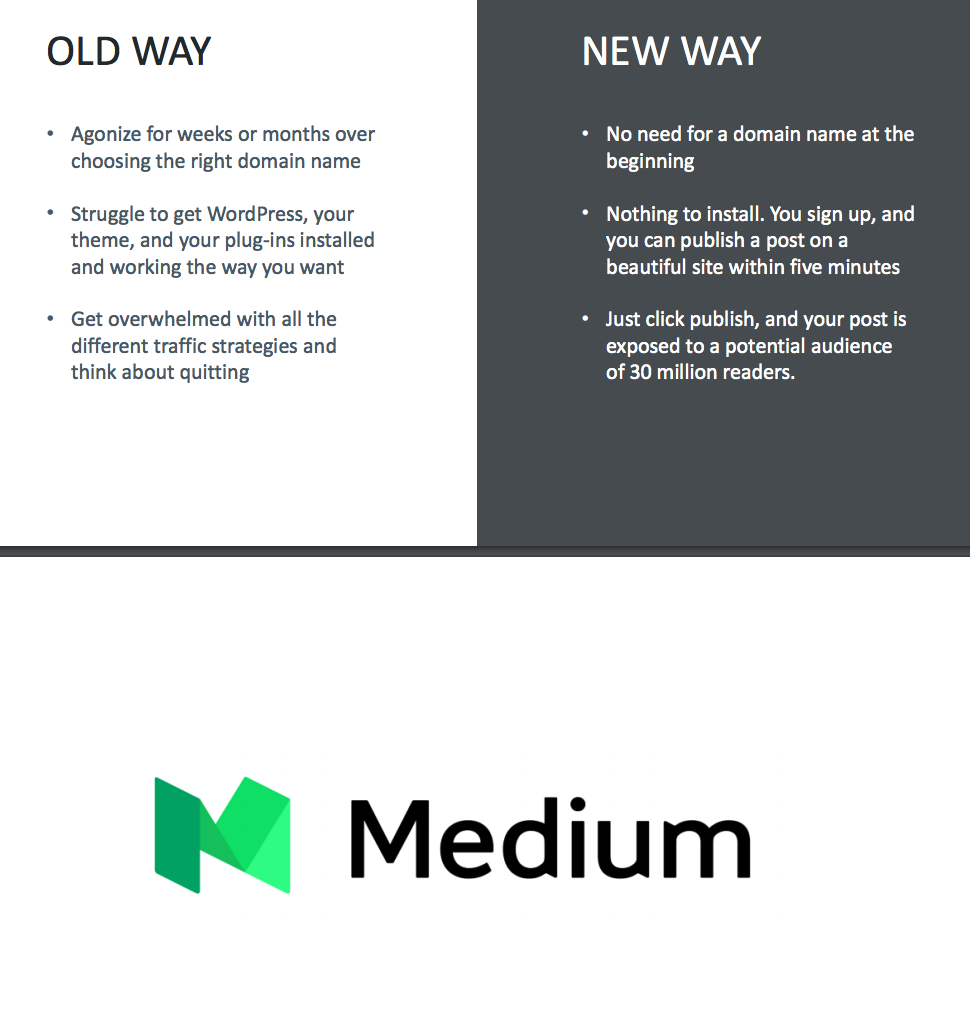
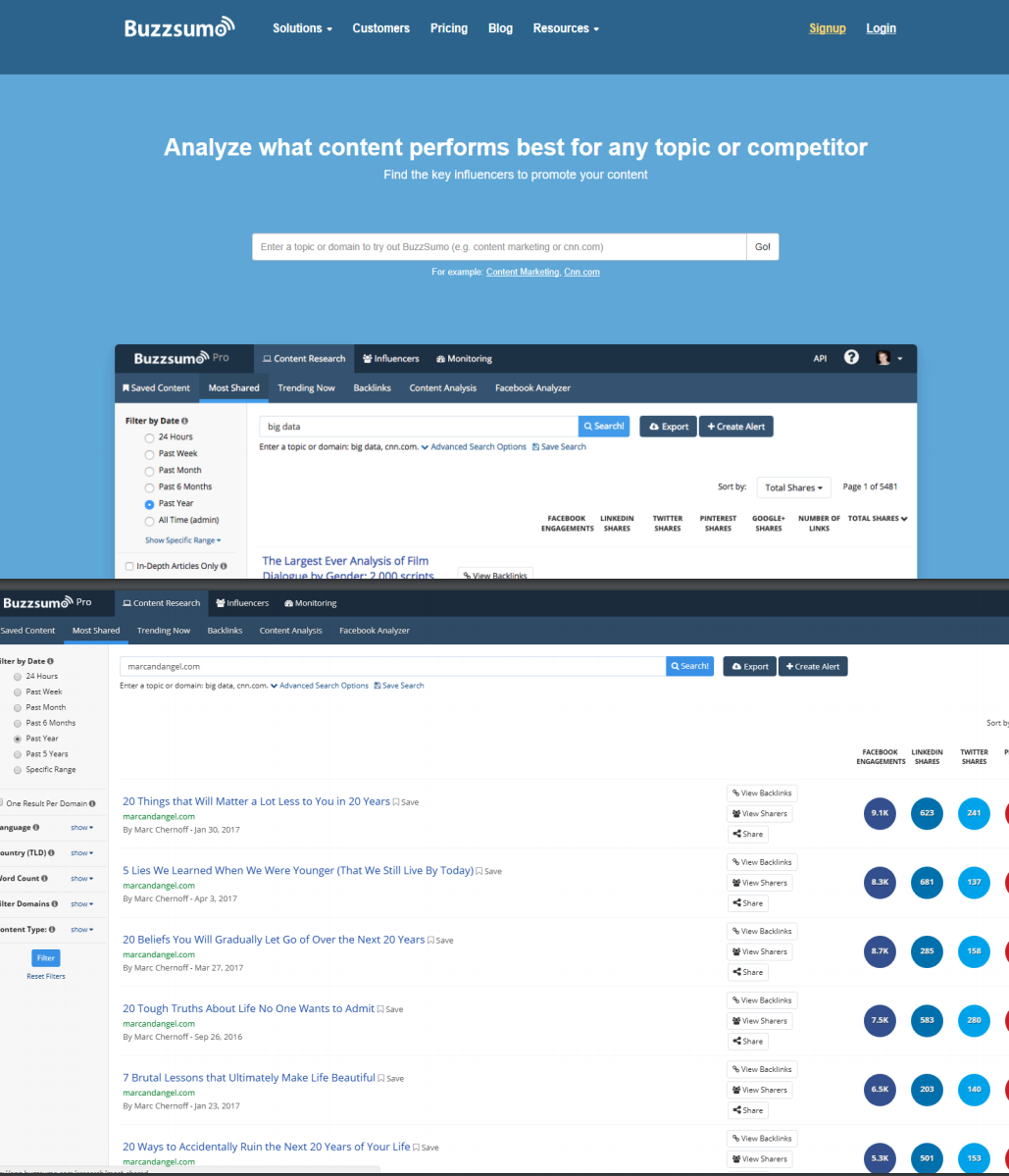
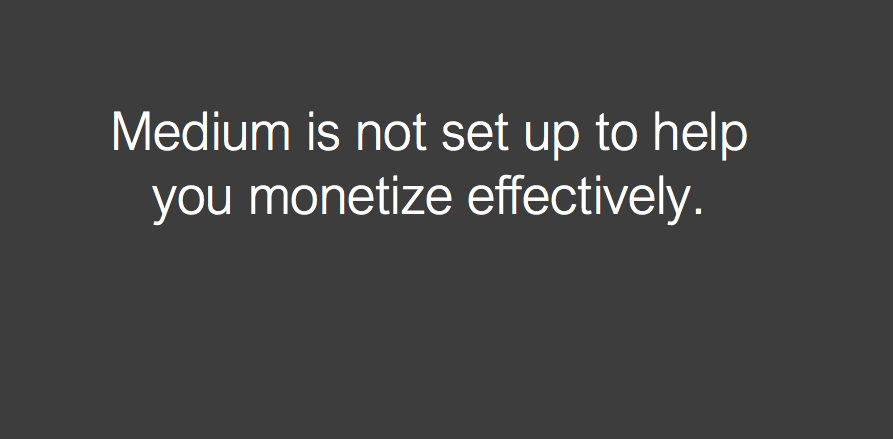
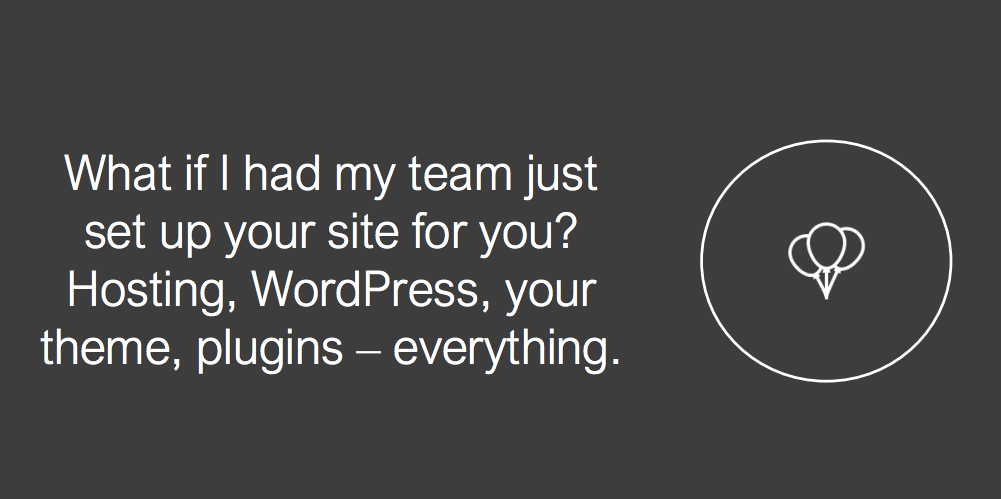
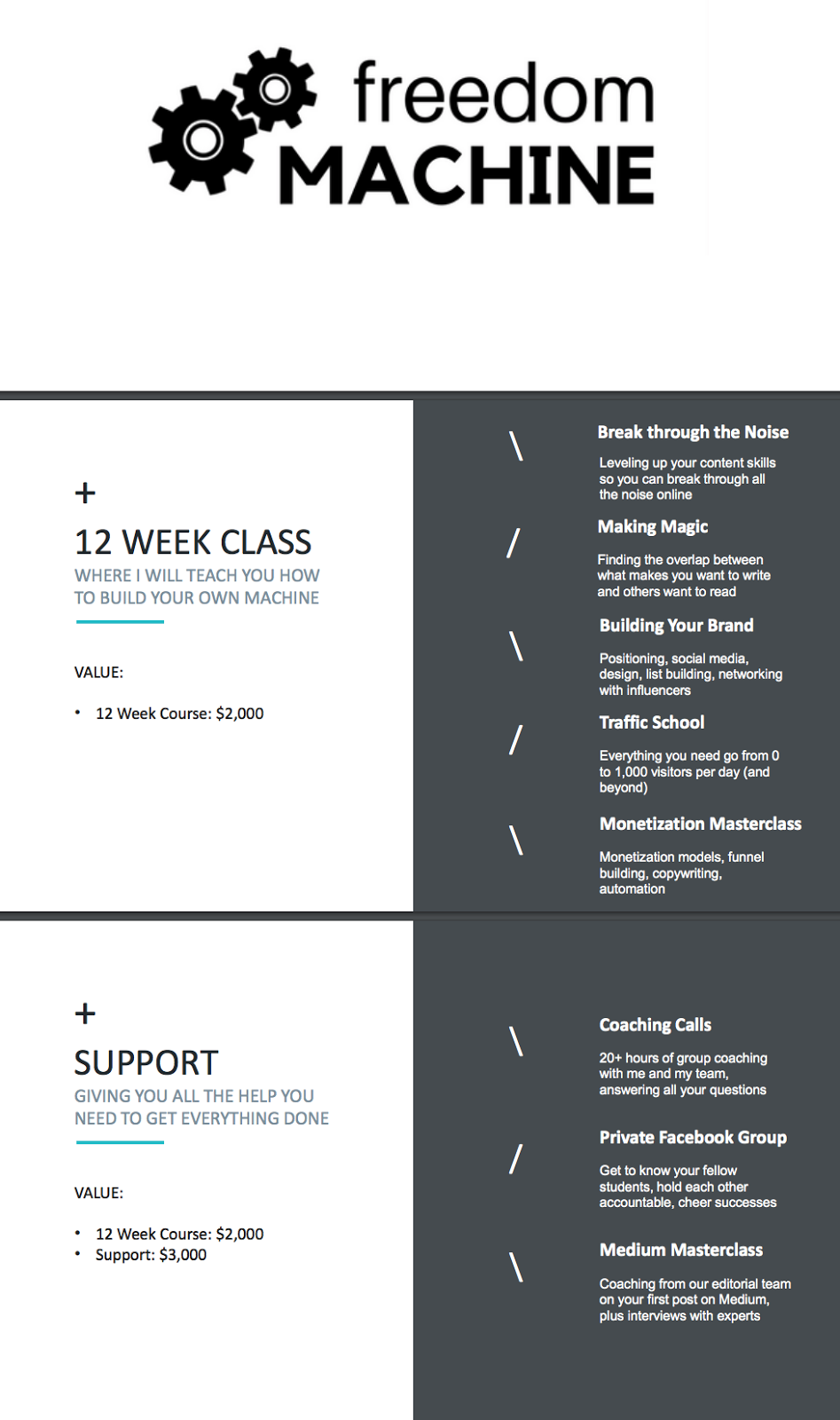
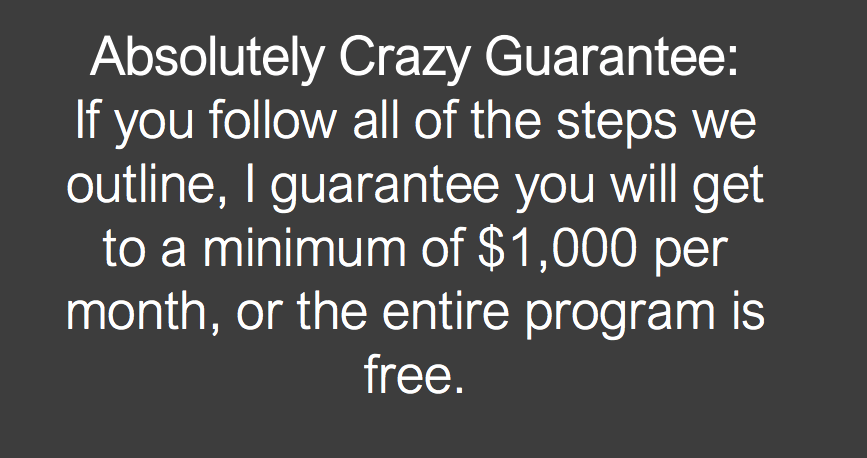

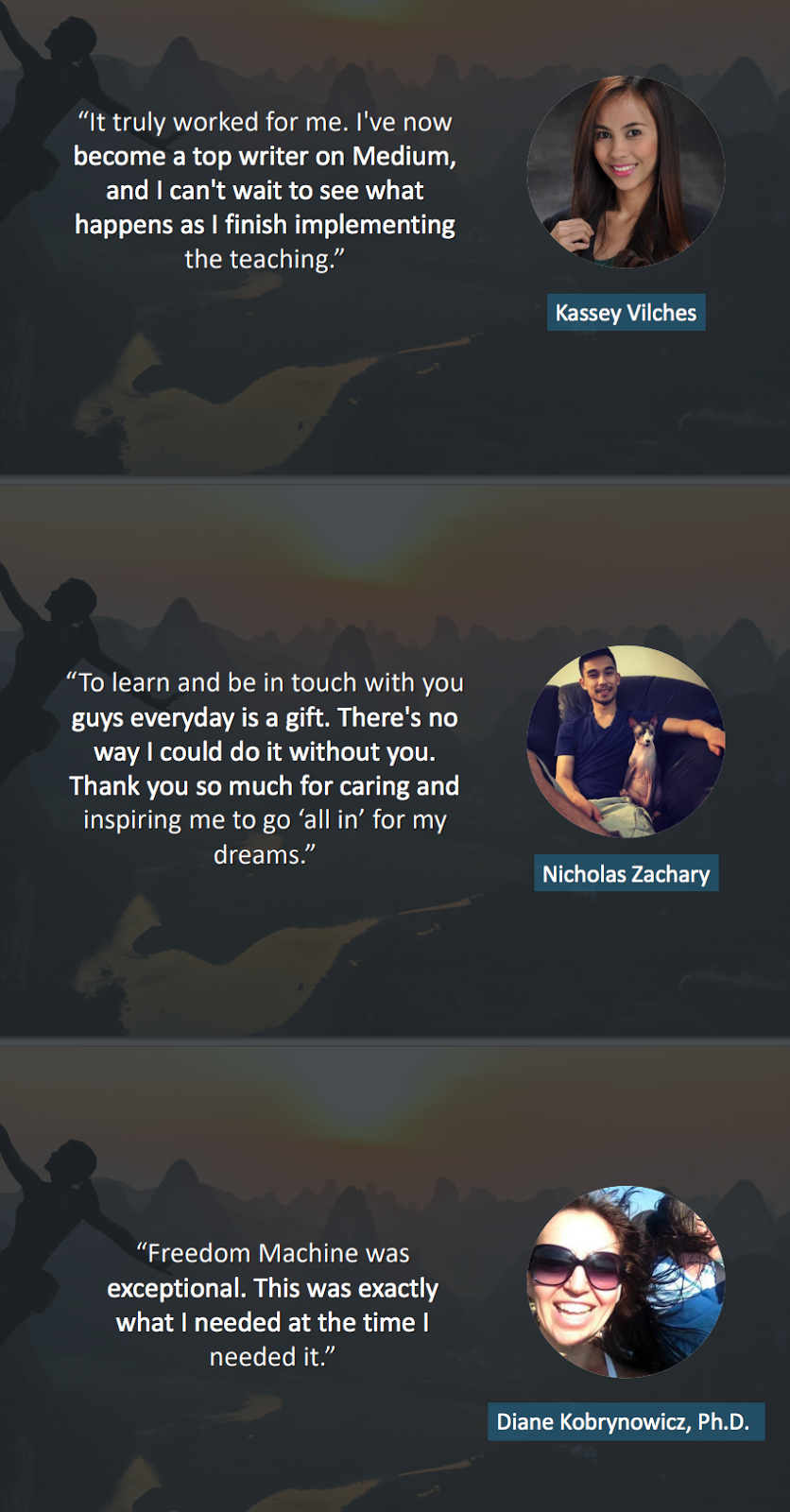

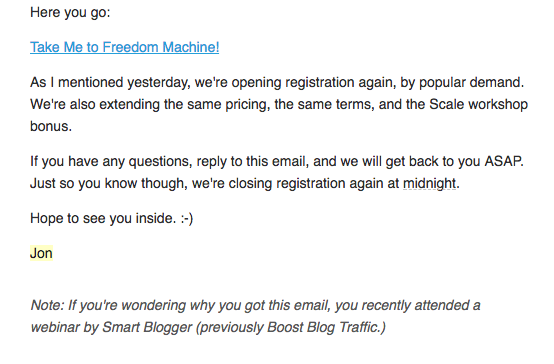

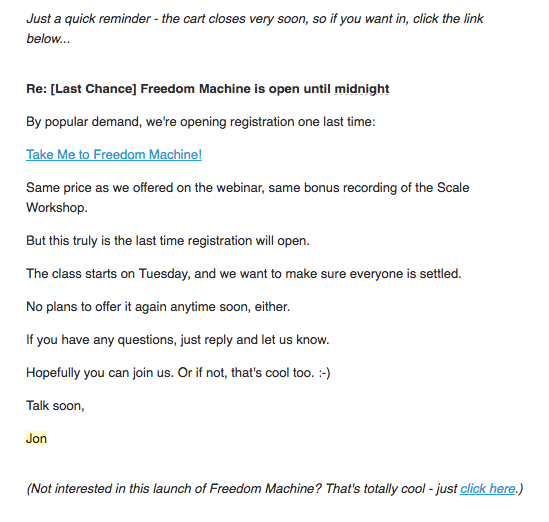
Comments (20)